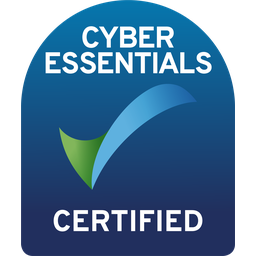Cybersecurity is a top priority, but finding the right cyber security talent is only the beginning. The onboarding process plays a crucial role in integrating new cybersecurity hires, making sure they adapt quickly, understand security protocols, and become productive members of the team. Without a structured onboarding guide, businesses are at risk of inefficiencies, security vulnerabilities, and high employee turnover.
A well-designed employee onboarding process is an investment in both long-term security and operational resilience. This guide outlines the essential components of onboarding new hires in cybersecurity, providing onboarding best practices that improve productivity, compliance, and retention.
Understanding the cybersecurity onboarding process
Onboarding in cybersecurity is significantly different from other roles. Cybersecurity professionals handle sensitive data, protect against threats, and provide compliance with regulatory standards. This means the onboarding process must be more than a generic HR checklist; it should provide structured security training, technical skill development, and cultural integration.
A strong employee onboarding process should be implemented in phases, covering everything from pre-boarding preparations to long-term professional development. The ultimate goal is to make sure that new hires understand their responsibilities, work efficiently with security tools, and contribute effectively to the businesses cyber defences.
The business case for effective cybersecurity onboarding
A poorly executed onboarding process in cybersecurity can have significant consequences. Insufficient training increases the risk of security breaches, and unclear expectations and a lack of support can lead to job dissatisfaction and high turnover rates. A structured onboarding guide improves security, operational efficiency, and employee retention.
Key benefits for business leaders:
- Stronger security posture: Well-trained employees make fewer mistakes that could lead to security incidents.
- Faster time to productivity: A structured onboarding process accelerates new hires’ ability to perform their roles effectively.
- Improved employee retention: Clear expectations and support improve job satisfaction, reducing costly turnover.
- Regulatory compliance: Proper training supports adherence to industry regulations, avoiding legal and financial penalties.
Onboarding best practices for cybersecurity professionals
Unlike standard onboarding processes, cybersecurity onboarding requires a detailed approach that includes technical training, regulatory compliance, and security culture integration. Business leaders and hiring managers must adopt a structured methodology that not only helps new hires acclimate to their roles but also prepares them to handle real-world security threats effectively.
1. Pre-boarding: setting the stage for success
A successful onboarding process begins before the new hire’s first day. Providing access to necessary tools, documentation, and security clearances in advance prevents delays and provides a smooth transition. Hiring managers should work with IT and HR teams to make sure that new employees are equipped with secure login credentials, required software, and any necessary hardware.
2. First-day orientation: laying a strong foundation
The first day should introduce the company’s mission, values, and security culture. Cybersecurity hires must be briefed on key policies, including access control protocols, data protection measures, and reporting structures. A clear understanding of expectations and responsibilities offers alignment with the organisation’s security objectives.
3. Role-specific training: building technical competence
Cybersecurity professionals require training that extends beyond standard onboarding. Depending on their role, they may need hands-on experience with security information and event management (SIEM) systems, threat detection tools, and incident response procedures. Providing structured technical training, mentorship, and real-world simulations accelerates skill development.
4. Compliance and security policies for regulatory adherence
Given the regulatory landscape surrounding cybersecurity, compliance training is non-negotiable. New hires must understand industry regulations such as GDPR, ISO 27001, and NIST frameworks. Making sure that employees are well-versed in compliance policies minimises legal risks and strengthens the organisation’s security posture.
5. Integration and continuous learning
Onboarding does not end after a few weeks. A strong employee onboarding process includes continuous training and professional development opportunities. Encouraging employees to get cybersecurity certifications, attend cyber security events, and participate in internal knowledge-sharing sessions improves their expertise and commitment to the organisation.
Common challenges in cybersecurity onboarding
Despite the benefits of a structured onboarding process, cybersecurity onboarding presents its own set of challenges. The fast-paced nature of the industry, the complexity of security tools, and the need for regulatory compliance create a demanding learning curve for new hires.
Without proactive strategies to overcome these obstacles, businesses risk delayed productivity, security vulnerabilities, and increased employee turnover. Identifying these challenges early and implementing solutions that set cybersecurity professionals up for success from day one.
| Changing threat landscape | Cybersecurity threats are constantly evolving, requiring organisations to update their onboarding process regularly. Training materials must reflect the latest threat intelligence and security protocols. |
| Complexity of security tools and processes | Many cybersecurity roles require proficiency in complex tools and frameworks. A lack of structured, hands-on training can hinder new hires from reaching full productivity. |
| Cultural integration | Cybersecurity teams often operate independently, leading to potential disconnects with broader business functions. Make sure that new hires understand how their role fits within the organisation fosters collaboration and a stronger security culture. |
Measuring the success of your onboarding process
To optimise the employee onboarding process, organisations must track key metrics:
- Time to productivity: How long does it take for a new hire to operate independently?
- Employee retention rates: Are cybersecurity professionals staying with the company long-term?
- Compliance adherence: Do new hires demonstrate a strong understanding of security policies and regulations?
- Feedback from new employees: Do new hires feel supported and prepared for their role?
Analysing these indicators allows businesses to refine their onboarding guide and make sure it effectively prepares employees for the complexities of cybersecurity.
A well-structured onboarding process is essential for cybersecurity professionals to thrive in their roles. For business leaders and hiring managers, investing in onboarding best practices improves security, operational efficiency, and employee satisfaction. By prioritising structured training, compliance education, and continuous learning, organisations can build a resilient cybersecurity team capable of mitigating risks and protecting critical assets.
Implementing a comprehensive employee onboarding process is not just an HR function; it’s a strategic initiative that strengthens an organisation’s defence against cyber threats.








